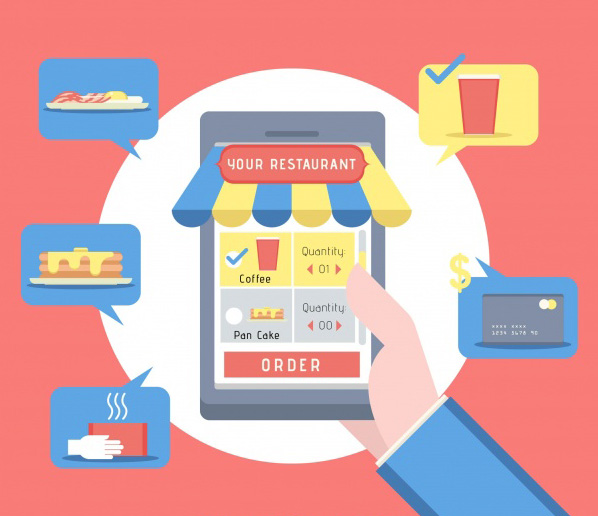Keen to know more
about our Full Service?
Our world class qualitative user testing can help explain the why behind your data and give you the answers to your burning questions.
“No matter how beautiful, no matter how cool your interface, it would be better if there were less of it.”
 These are the words of Alan Cooper, an acclaimed American software-designer, programmer and the man generally held up as the “Father of Visual Basic”. He is essentially arguing in favour of simplicity in design – maybe the essence of his statement would be the everyday phrase “less is more”. Here at the TestMate lab, our research into user experience and design has backed this up time and time again.
These are the words of Alan Cooper, an acclaimed American software-designer, programmer and the man generally held up as the “Father of Visual Basic”. He is essentially arguing in favour of simplicity in design – maybe the essence of his statement would be the everyday phrase “less is more”. Here at the TestMate lab, our research into user experience and design has backed this up time and time again.
It may be challenging to know how to achieve simplicity in design, as the concept itself is objective. Take a look through the apps you use most often on your phone, or the sites you visit every day on your laptop: we’d wager they’re probably just about as simple as they can be. And – whether it’s an app for renting out your spare room, your go-to news site, or favourite bookstore online – if you look closely you’ll notice they share a handful of common design elements.
It’s vital to understand that simplicity in design does not mean the absence of choice. Instead, simplicity in design makes a purchasing decision with a dozen options as simple, straightforward and intuitive as possible.
 Imagine you’re ordering a pizza for dinner on your phone. Not only do you have to choose its size, toppings, base and crust, you also have to pick sides, desserts and drinks, use your discount code, give your address, and pay for it. There’s actually a surprising plethora of information to be gathered just for the simple task of getting your favourite pizza to your door, right? Now, simply designed, you would be able to order this in thirty seconds by just scrolling down one page, choosing from some easy drop down menus and popping in a couple of lines. The chances are you do this without noticing every time you order food online.
Imagine you’re ordering a pizza for dinner on your phone. Not only do you have to choose its size, toppings, base and crust, you also have to pick sides, desserts and drinks, use your discount code, give your address, and pay for it. There’s actually a surprising plethora of information to be gathered just for the simple task of getting your favourite pizza to your door, right? Now, simply designed, you would be able to order this in thirty seconds by just scrolling down one page, choosing from some easy drop down menus and popping in a couple of lines. The chances are you do this without noticing every time you order food online.
This leads on nicely to a sister point focused on simplicity. There is a popular school of thought in design – and website design – that believes we don’t notice when we are using a well-designed website. In fact, it’s only when we use poorly-designed websites that we notice them. Design has been compared to the air in this context: we only talk about it when it’s bad. This may be a slightly simplistic way of looking at it, but there is merit in the point.
Think about the times for example when you wanted to pull your hair out after failing for half an hour to find some basic information online or to order something through your phone. Maybe there was an error message that just wouldn’t go away, or a crazy labyrinthe of pages you got lost in. Either way, bad design was the cause. The opposite of this is the pizza you ordered with all its extras in the blink of an eye. Good, simple web design – isn’t noticed.
In many ways, simple, intuitive design will lay the ground for your customers to have a smooth user experience. For several reasons this will ultimately advantage your product. Why is simplicity important in design? Let’s take scratch the surface and look at three benefits of simplicity in design. You can think about how these would fit your product:

1. Digital inclusion has become something of a buzzword in public policy in recent years. It’s the extent to which various groups across society have the opportunity, access, knowledge and skills to get online and take advantage of what the internet – and technology more broadly – offers. Shifted into the sphere of user experience, simplicity in design promotes and encourages digital inclusion because it makes your product as accessible as possible to those who may struggle with more complex layouts and designs. In a nutshell: keep your design simple and it will appeal to a wider range of users across society.
2. An enhanced overall user experience is the result of the smoother, quicker customer journey that a simple, intuitive design will hand your customers. Our research in user experience has consistently shown that the majority of users prefer simple designs. They lead to a more elegant, efficient and streamlined customer journey which improves their overall user experience. This will in turn make them more likely to return to your product.
3. A lower bounce rate and a higher conversion rate are likely plus points of having a simple, intuitive and user-friendly design. Information overload, a lack of clear signposting, a confused layout, or any combination of these factors amongst others can lead to customers getting lost and frustrated. And, unsurprisingly, lost and frustrated customers are more likely to leave your page or app quickly or without converting. So keep your design simple, easy to understand and intuitive. This will minimize your bounce rate and give yourself the best chance of converting visitors to customers.

To sum up: simplicity in design is, in almost all cases, worth striving for. And following the principles of simplicity in design will likely benefit your product in myriad ways; on top of the three we have highlighted: reducing the barriers to its use, thus giving it a broader appeal; enhancing the overarching user experience it offers customers, and increasing its conversion stats. Striving for simplicity should be your ultimate goal, as less is more.
Do you want to know your customers’ thoughts on your new design? TestMate can help! Get in touch to see how we can tailor our user testing to your demographics.

Our world class qualitative user testing can help explain the why behind your data and give you the answers to your burning questions.